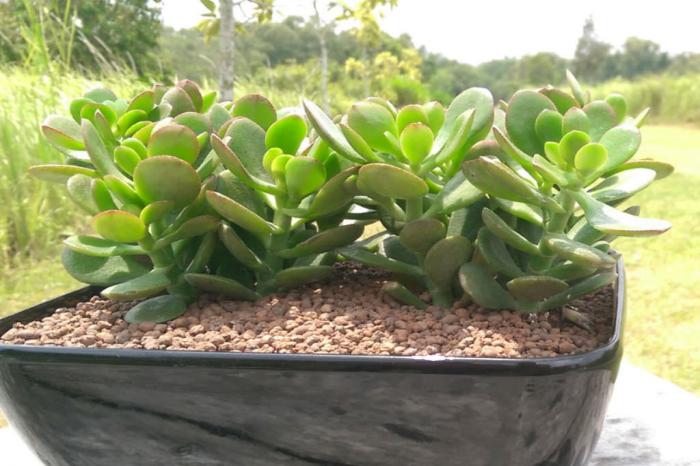Jade plants (Crassula ovata) are popular succulents known for their attractive appearance and ease of care. Their glossy, rounded leaves and tree-like structure make them a favorite for indoor environments. One important factor in ensuring the health and vitality of a jade plant is its placement within your home. Specifically, the direction in which you place your jade plant can significantly impact its growth and overall well-being. This article explores the best direction to keep a jade plant and provides guidance on how to optimize its placement for optimal health.
Understanding Jade Plant Requirements
Jade plants are native to South Africa and thrive in conditions that mimic their natural habitat. They prefer bright, indirect light and are relatively low-maintenance. However, proper placement is crucial to their growth. The direction you choose for your jade plant’s placement affects its exposure to light, which in turn impacts its health.
Best Light Conditions for Jade Plants
Jade plants require ample light to thrive. Understanding how light conditions affect them can help you decide the best direction for placement.
Bright, Indirect Light
Jade plants grow best in bright, indirect light. Direct sunlight can cause their leaves to become sunburned, leading to discoloration or leaf drop. Placing your jade plant in a location where it receives bright, filtered light is ideal. This can be achieved by positioning the plant near a window that receives plenty of natural light but is shielded from the harsh rays of the sun.
East-Facing Windows
East-facing windows are generally considered the best direction for jade plants. These windows provide gentle morning sunlight, which is ideal for jade plants. The morning sun is less intense than afternoon sun, reducing the risk of sunburn while still providing sufficient light for healthy growth. Jade plants placed near east-facing windows often exhibit robust growth and vibrant foliage.
South-Facing Windows
South-facing windows can also be suitable for jade plants, especially during the winter months when sunlight is less intense. These windows receive a lot of sunlight throughout the day, which can benefit jade plants. However, it’s important to monitor the plant for signs of sunburn. If the sunlight becomes too intense, consider using sheer curtains to diffuse the light or move the plant slightly away from the window.
West-Facing Windows
West-facing windows provide strong afternoon sunlight, which can be too intense for jade plants. While jade plants can tolerate some direct sunlight, prolonged exposure to intense afternoon sun can cause leaf burn. If you place your jade plant near a west-facing window, ensure it is shielded from the most direct rays, perhaps by using curtains or placing the plant further away from the window.
North-Facing Windows
North-facing windows typically provide the least amount of natural light. Jade plants may struggle in these conditions as they require bright, indirect light to thrive. If north-facing windows are your only option, consider supplementing with artificial grow lights to provide additional illumination. Ensure the jade plant receives as much light as possible to maintain its health.
Adjusting for Seasonal Changes
Light conditions can vary with the seasons, so it’s important to adjust your jade plant’s placement accordingly.
Winter Considerations
During winter, the angle of sunlight changes, and daylight hours are shorter. Jade plants placed near south-facing or east-facing windows may benefit from additional light. Consider moving the plant closer to the window or using grow lights to compensate for the reduced natural light.
Summer Considerations
In the summer, sunlight is more intense. Monitor your jade plant for signs of sunburn if it is placed in direct sunlight. If necessary, provide some shading or move the plant to a location with filtered light to prevent damage.
Additional Placement Tips
Aside from the direction of light, other factors can influence the health of your jade plant.
Temperature
Jade plants prefer stable temperatures. Avoid placing them near drafts, heating vents, or air conditioning units, as extreme temperature fluctuations can stress the plant. Ideally, keep jade plants in temperatures ranging from 65°F to 75°F (18°C to 24°C).
Humidity
Jade plants are adapted to dry conditions and do not require high humidity. Ensure the room where you keep the jade plant has good air circulation and avoid placing the plant in overly humid environments, such as bathrooms.
Accessibility
Consider the accessibility of the jade plant for routine care. Ensure it is placed in a location where you can easily water it, check for pests, and perform any necessary maintenance. Avoid placing it in high-traffic areas where it might be accidentally knocked over.
See also: How to Care for a Jade Plant: A Complete Guide
Common Problems and Solutions
Even with the best placement, jade plants can encounter issues. Understanding these problems and their solutions can help you keep your jade plant healthy.
Leaf Drop
If your jade plant’s leaves are dropping, it could be due to inconsistent watering, poor light conditions, or temperature stress. Ensure you are providing the right amount of water and that the plant is in an appropriate light condition. Check for drafts and adjust the plant’s location if needed.
Leaf Burn
Leaf burn can occur if the jade plant receives too much direct sunlight. If you notice brown or scorched patches on the leaves, move the plant to a location with less intense light or provide shading.
Leggy Growth
Leggy growth, where the jade plant becomes elongated and sparse, can result from insufficient light. Move the plant to a brighter location to encourage more compact, healthy growth.
Conclusion
Choosing the right direction to keep your jade plant is crucial for its health and vitality. Jade plants thrive in bright, indirect light, with east-facing and south-facing windows being ideal locations. Adjust the plant’s placement according to seasonal changes and ensure it is not exposed to extreme temperatures or humidity. By understanding the light requirements and making appropriate adjustments, you can enjoy a thriving, healthy jade plant that enhances your living space.

